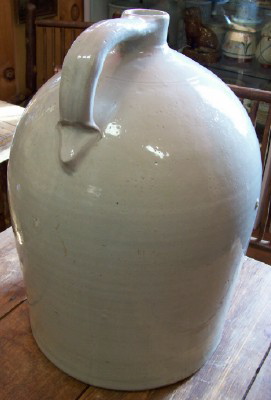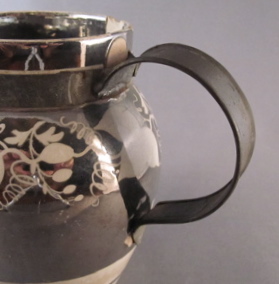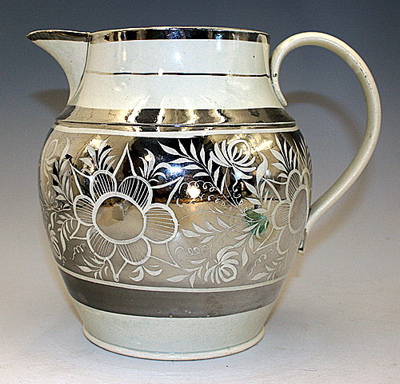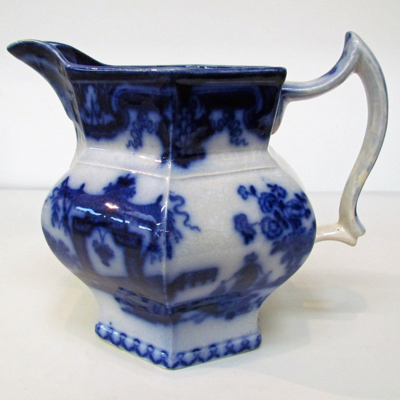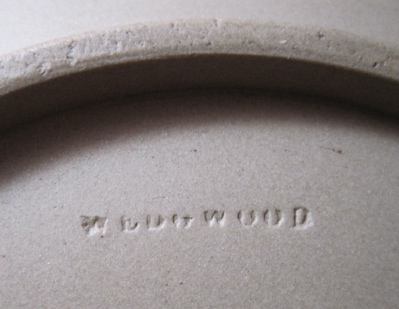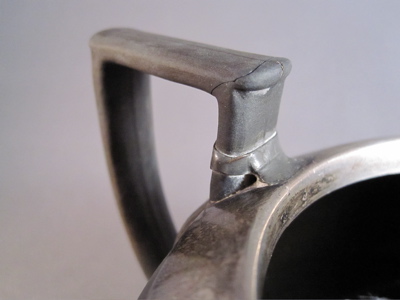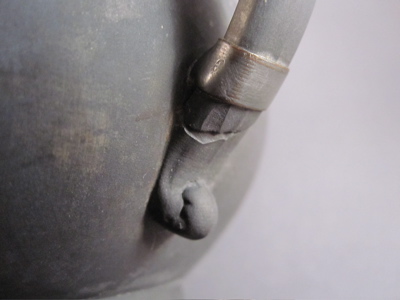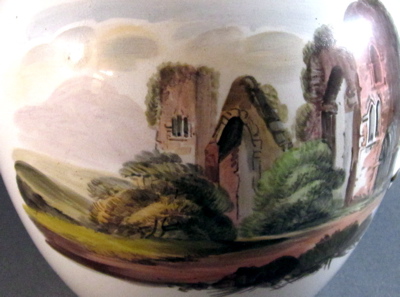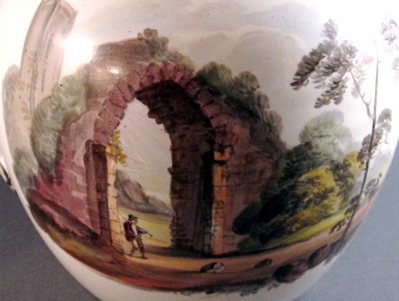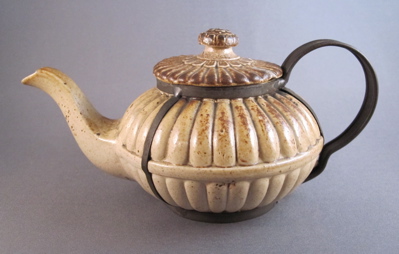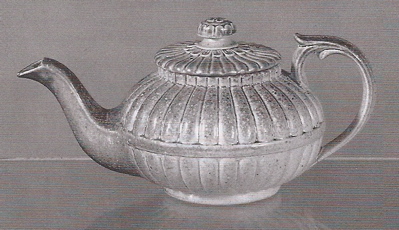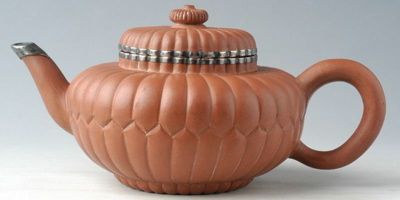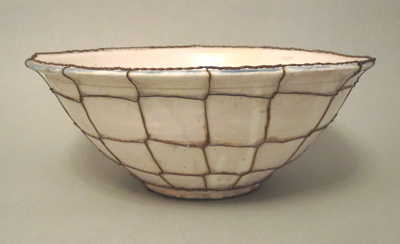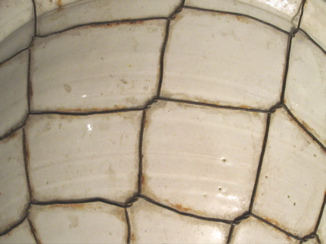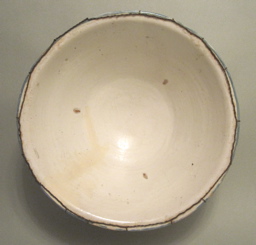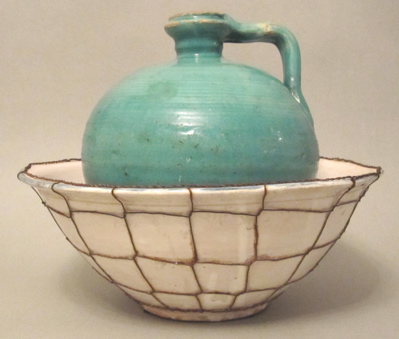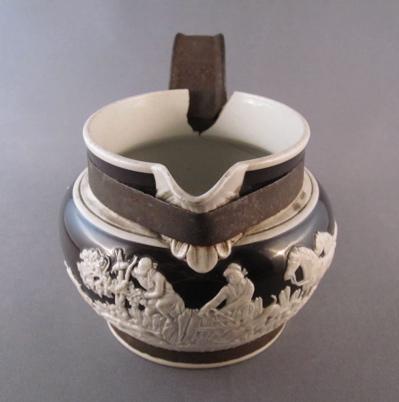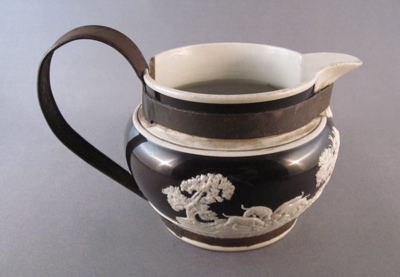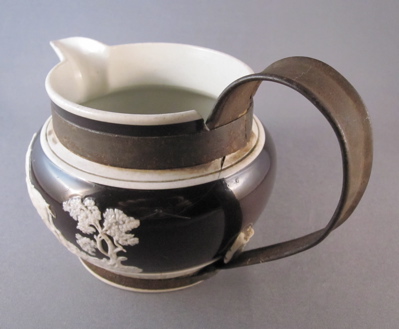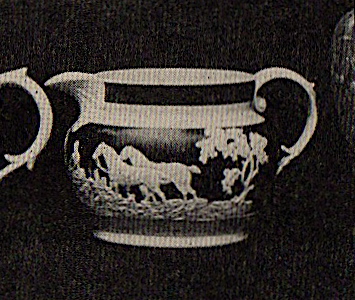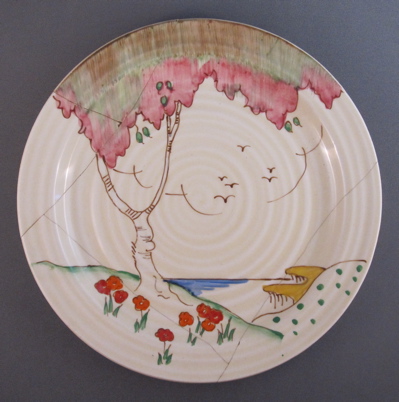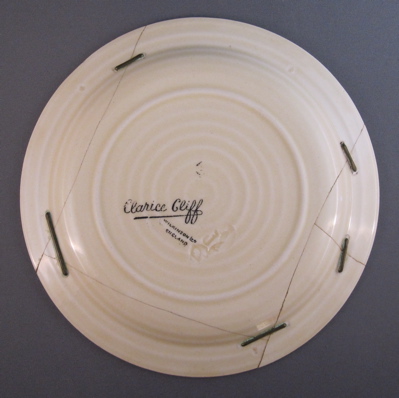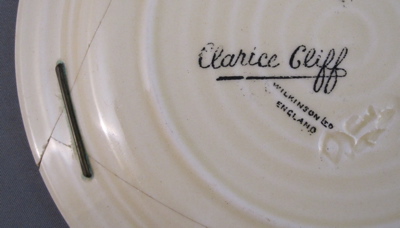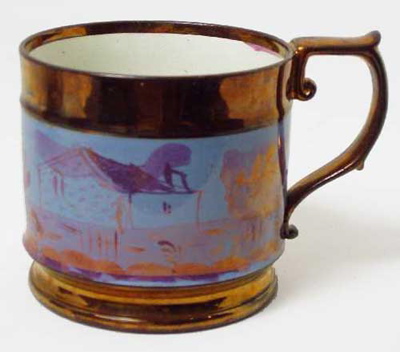When I found this large and very heavy American stoneware pottery wine jug in Maine, I was unable to pack it properly and take it with me on my flight back home later that day. Luckily, one of the friends I was visiting was a pilot and simply brought it on board his flight to New York the next day. The triangular remains of the broken clay handle leaves a distinctive maker’s mark
It would have been awkward to lift this 18-1/2″ tall jug with the absence of its handle, especially when full of wine. Rather than trying to replace the broken handle, a sturdy iron band with swing handle was attached to the jug
A close up of the iron strap and handle shows the work of the local ironsmith who made this East coast jug more functional
The small hole at the bottom is where a wooden spigot would have been inserted to dispense the wine
A similar jug shows what the applied handle would have looked like
Photo courtesy of Prock’s Crocks




